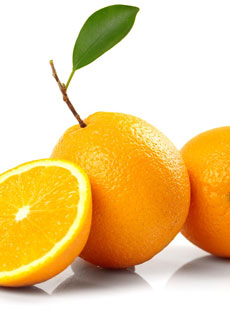Nourishing your body during the cold months of year

It’s cold. It’s dark. It’s been months since those summer farmers markets were full of fresh produce. It can be tempting to eat comfort foods (mmm … cheesy tater-tot hot dish) every night before settling down on the couch under a blanket.
Studies show that when temperatures drop, our longings for high-calorie, high-carbohydrate foods go up. In addition, lack of sun exposure leads to a drop in serotonin, which can also cause food cravings. So, in winter we need to make a conscious effort to eat healthy.
Start with what’s in-season
Many people only think about in-season produce during the summer and fall, but the winter months have their own bounty.
- Warming foods (root vegetables and crucifers): Many Asian and Indian traditions designate certain fruits and vegetables as “warming foods”—foods that generate heat in your body. And, luckily, most of these foods are in-season in the winter. Examples include root vegetables (such as carrots, sweet potatoes, parsnips and turnips) and cruciferous vegetables (like cabbage, Brussels sprouts, kale, cauliflower or broccoli). Additionally, many of these foods are full of the very vitamins, minerals and antioxidants we need to stay healthy during the dark, winter months.
- Squash: Acorn, butternut, kabocha and delicata squash are in-season throughout the fall and winter. In addition to being filling, satisfying winter foods, squashes are associated with a long list of health benefits—from boosting skin health and eye sight to strengthening the immune system and preventing cancer.
- Citrus fruits: Ok, citrus fruits do not grow in Minnesota during the winter, but they are in-season. Stock up on clementines, oranges, grapefruit, lemons, kumquats, blood oranges, and limes to get the Vitamin C you need to ward off that winter cold.
- Red fruits: Pomegranates, red grapes, passion fruits, and cranberries are all winter fruits with a myriad of health benefits. Research shows that red and bright pink contain substances like lycopene and anthocyanins that help your body fight disease and promote good health. In fact, The National Cancer Institute recommends you eat a serving of red fruits every day.
See this list of Minnesota seasonal fruits and vegetables to learn about other in-season winter fruits and vegetables. Or, find out what you can grow at home during the winter.
Supplement with frozen and canned foods
When fresh produce is hard to get, frozen or canned fruits and vegetables are a good alternative. Be sure to avoid products with added salt and sugar or foods packed in syrups or cream sauces. Note: If you have the option, choose frozen vegetables over canned, because canned vegetables lose some nutritional value during the preservation process.
Put it all together
- Vegetable soups: Soup is a great convenience food. If you make a pot of veggie-rich soup on the weekend, you can warm it up for dinner all-week long. All you need is a piece of whole-grain bread and you’ve got a healthy dinner. Try these winter vegetable soup recipes.
- Stir-fries: Winter vegetables—such as carrots, crucifers or squash—are excellent stir fry ingredients. Get tips and ideas on how make a great winter stir fry.
- Casseroles: Even if you can’t eat that cheesy tater-tot hot dish every day, you can still get that comforting casserole feeling (and convenience) using healthy ingredients. See these healthy winter casserole recipes that reduce fat and sodium and add extra veggies.